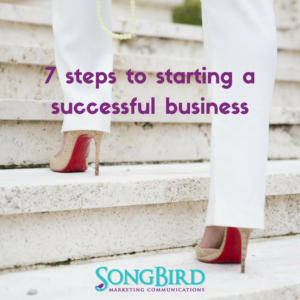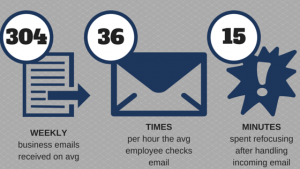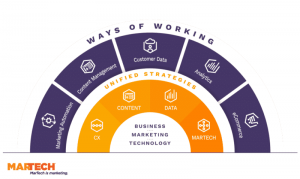— June 19, 2018

Starting a business can be scary. For some entrepreneurs, it can be really overwhelming when you think about the number of things that have to be accomplished. It’s important that you break the process down into steps so you approach it in smaller chunks rather than all at once. That way, you can enjoy small wins along the way to your larger success.
Here are 7 steps to helping you build and launch your business the right way.
Step 1: Idea validation
The first step on your journey to starting your own business is to make sure that you have a valid idea that will sustain a business for the long term. You don’t want to be stuck in the group of businesses that don’t make it past 5 years, especially if it’s because your idea won’t work.
To figure out if your idea is valid, you need to ask yourself if there is a market for what you want to offer. Identify a problem your potential customer is having and then figure out how you will solve it with your product or service. Once you figure out how you will solve a specific problem, you need to ask whether people would be willing to pay to have this problem solved.
There are a few ways to help you validate your idea:
- High level audience segmentation to get a sense of what makes your target audience tic
- Market research through surveys, polling, and focus groups
- Participate in online forums to either drive the dialogue and ask questions or listen to see if multiple people are having this same issue and are asking for a solution
- Plain old audience listening on social media
Step 2: Product development research
After validating your idea, ask yourself how easy it will be to solve the problem for your target audience. There are a number of different factors to consider at this stage such as:
- What resources are needed to develop and manufacture the product?
- Does your business need to apply for and maintain any certifications?
- Who will manufacture the product? Ship it?
- What type of packaging will you use?
- If you have a service, how will you deliver it?
It is also at this stage that you will develop the prototype if you are selling a product. You need to test it to see if it will work the way you think it will.
Step 3: Defining your market
While you did high level audience segmentation in step 1, you need to get into the nitty gritty details of your target audience to identify any behaviour that will either help you or hurt you along the way to success. Look at all of the demographic and psychographic information for each audience segment that you will target. Don’t be afraid to target niche audiences because if you are looking at too broad a reach, it can be easy to either stretch yourself too thin when it come to the marketing budget, but you also can’t be all things to all people.
Once you know more about who you are selling to, you need to identify both direct and indirect competitors. Doing research on your competitors to find out how they are marketing their business will help you to position yourself appropriately in the marketplace. For example, if you have two direct competitors and one offers a high-end, exclusive service while the other offers an entry level service, perhaps your best positioning would be to offer a mid-market service.
The final thing in step 3, and an important step that a lot of people miss, is to define your value proposition clearly and succinctly. This will help you stay on track in terms of goal setting and communicating with your audience.
Step 4: Business plan
If you have gotten to step 4, you are likely pretty sure you can be successful with your idea – congrats! Now you can move on to building a solid business foundation. The business plan can sometime be a deterrent to people either starting a business or doing it properly because it can be easy to get hung up on creating a detailed, long, drawn out plan, when in reality, you just need to make sure you identify the basics. In your business plan, you need to get the following things on paper:
- Your short-term and long-term goals: Make sure they are measurable so you can identify success when you hit it.
- Company overview: Who are you as a company? What are your values? What products/services do you offer? How does it benefit your customers?
- Competitive analysis: A market overview based on your earlier research
- High level marketing plan: What channels will you use to reach your target audience?
- High level operation plan: What partners/suppliers will you work with?
- Financial plan: Include all costs and set up forecasting for 3 – 5 years.
- Will you fund it yourself or apply for outside assistance from a financial institution or venture capitalist?
Step 5A: Brand development
Your brand is so much more than just your logo. Take the time to develop your brand messaging and the full brand story and figure out how your audience relates to your brand before moving forward with your visual identity. If you do that, your logo, website, branded images, and social media channels will be tailored to your audience and be anything but generic. It will help you connect better with your audience.
Step 5B: Product development
You have the prototype, now you need to get it ready for market and to start the process of producing it on a larger scale.
Step 6: Product launch
You’ve put the work in, now it’s time to get it out to the public. Make sure you give yourself enough time leading up to your launch to get everything in place. It’s also a good time to start building buzz so people are already curious by the time you officially launch.
Step 7: Congratulate yourself. You now have a business!
Now you can start raking in the dough… Ok, this doesn’t always happen right away, so you need to be patient and adaptable.
A version of this article was originally posted to the SongBird Marketing Communications Blog.
Business & Finance Articles on Business 2 Community
(114)







